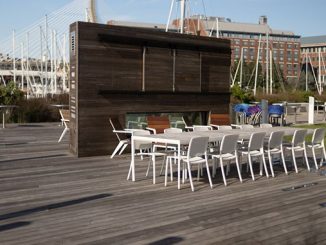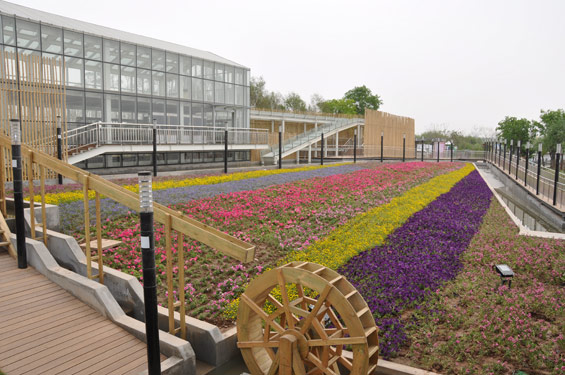
Last month the International Horticultural Expo opened in Xi’an. This international exhibition is not just about gardening, but also covers the technology of cultivating nature and land use in the broadest sense. For China this is the next major international event after the 2008 Beijing Olympics and the 2010 Shanghai World Expo.
At the International Horticultural Expo, the focus is on relationship between man and nature. Thus there is a strong emphasis on sustainability. Because of the substantial and rapid urbanization in China, there is emphasis on sustainable urban transformation. Therefore, Xi’An is an interesting choice of location for the International Horticultural Expo. Xi’An is the ancient capital of China. It is known from the Terracotta Army and for centuries a major cultural center. Today, it is an important knowledge city with some 100 universities and research institutes in the vicinity. It aims to be the greenest city in China to be. Xi’An wants to set an example for other cities, and the Expo is a showcase for others cities to study.
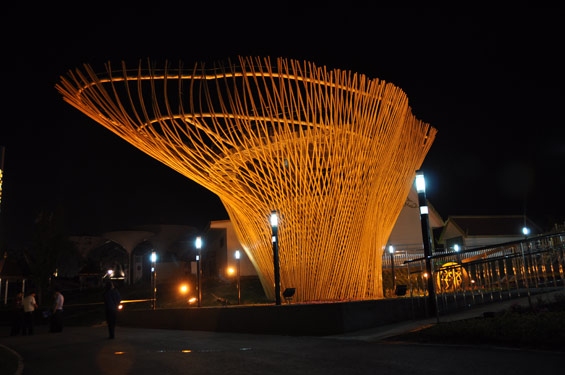
Holland Garden | Alliance NL
Thanks to the prominent role of the Netherlands in the field of flowers, the Dutch contribution, Holland Garden, got a prominent spot at the waterside. The gardens and pavilions, which are designed by Alliance NL: a collaboration of a number of Dutch designers, was built and funded by the Chinese government. The Chinese government has assumed that the content for an exhibition about the Netherlands was to be designed and organized by the Netherlands.
Water management and the cycle of food and energy are the themes of the Holland Garden. A mini landscape is designed that refers to the cycle of water, food and energy.
The Holland Garden consists of three parts. The Eco garden containing a cyclic watercourse designed by OKRA landscape architects. The Glass Pavilion, a reference to the Dutch greenhouses, designed by Tekton Architects and Atelier Dutch. And beside this there is the Flower Pavilion, a landmark based on the fusion of the outlines of Xi’an and the Netherlands, designed by Archipel Ontwerpers. EuSino Foundation does the overall coordination.
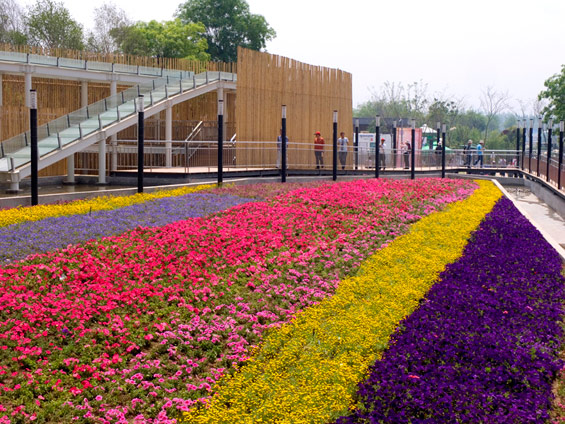
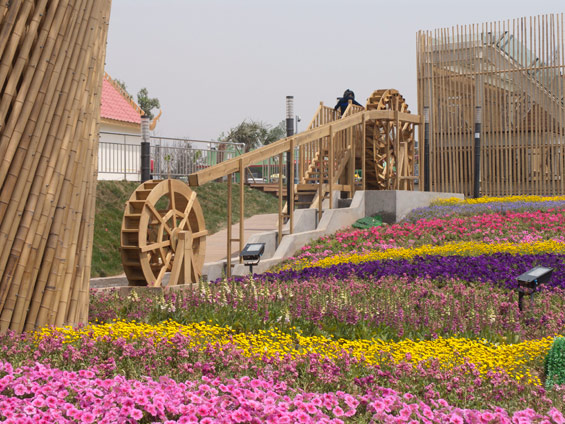
Eco Garden |OKRA Landscape Architects
The Dutch garden represents an image of the reclaimed landscape in the Delta. The contemporary perspective of the delta is the challenge of an integrated response to climate changes on the rise of sea level and decrease of the land with an increasing level of urbanization. The garden appears at first glance a technically dominated landscape. But the technique is closely related to the natural cycles within an artificial system. The garden connects in sustainable ways water and nutrients to food and energy. There is a Levada system(cyclic watercourse) over the field, with the pavilion becoming part of the landscape and the system. Through the Levada(cyclic watercourse) the water runs down to the irrigate the fields.
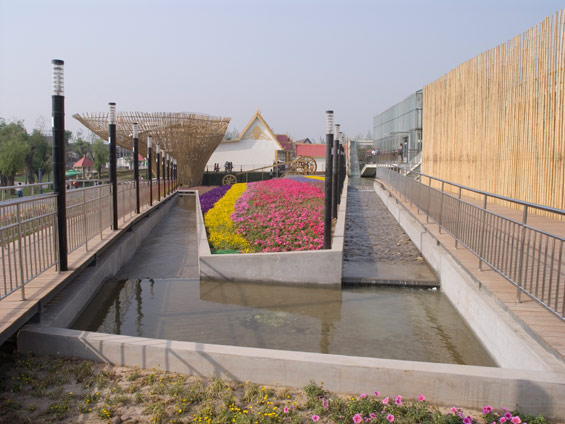
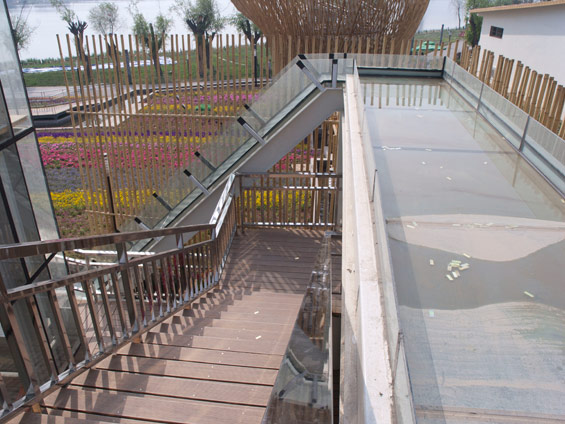
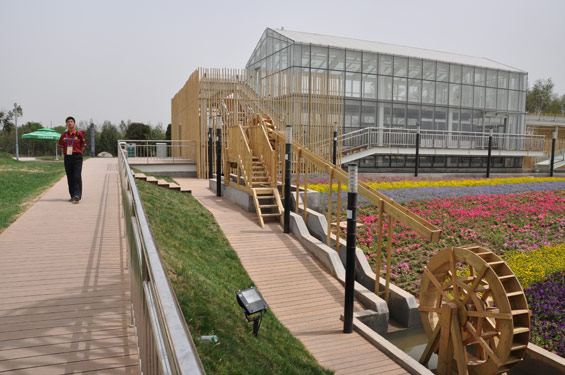
Glass Pavilion | Tekton Architects /Atelier Dutch
The greenhouse, as representative of Dutch horticulture, is the basic element of the pavilion. Surrounded by a bamboo screen, she doesn’t expose herself and the garden directly. In and around the greenhouse, water can be experienced at different altitudes, as in the Dutch landscape. Continued in the garden, the life cycle of water and the Dutch high quality knowledge are visualized. The different floors are only reachable from the outside. Stairs and ramps go parallel to the watercourse into the greenhouse. The 2011 Horticultural Expo will focus on sustainability and is a temporary event. The materials and building construction are geared to this. The greenhouse is prefabricated, disassembled and completely reusable. Innovative glasses maximize light and warmth for plants and modulate energy production and human needs. Water provides primary cooling, from the roof of the greenhouse is a thin film of water runs on the glass.
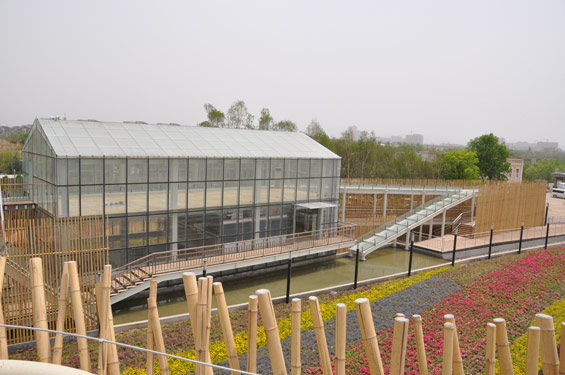
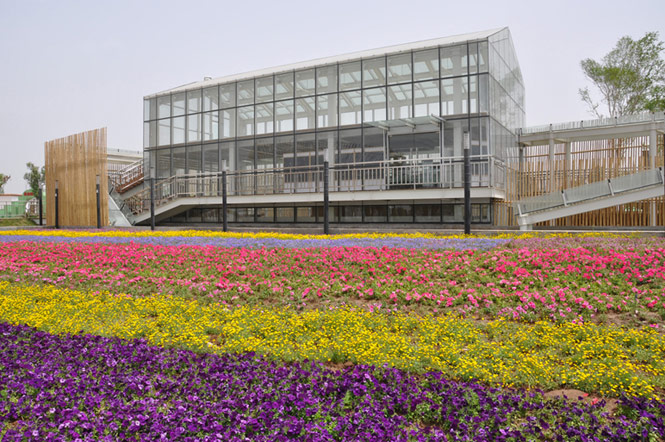
Flower Pavilion | Archipel ontwerpers
The shape of the Flower Pavilion, a large artificial flower, refers to the contents of the exhibition: a horticultural world, where plants and flowers are central. Furthermore, it points to our current technology which is dominated by information flows: the flower form is a computer-generated sculpture created by the fusion of the outlines of the map of the Netherlands with that of Xi’An. And with this the pavilion also refers to the rich history that both the Netherlands and China have in the field of knowledge and cartography. Using the cards as a metaphor for the clash of two cultures is partly inspired by the history of Xi’an. The first emperor of China, Qin Shi Huangchi (259-210 BC) has under his mound (just outside Xi’an) a mausoleum where the floor is shaped like a map of the Chinese empire. This map is larger than a football field.
The Flower Pavilion is made of bamboo. In the middle is a calyx as a pier with a steel spiral staircase that takes visitors up. From this belvedere one has a nice view over the exhibition grounds and the Dutch miniature landscape.
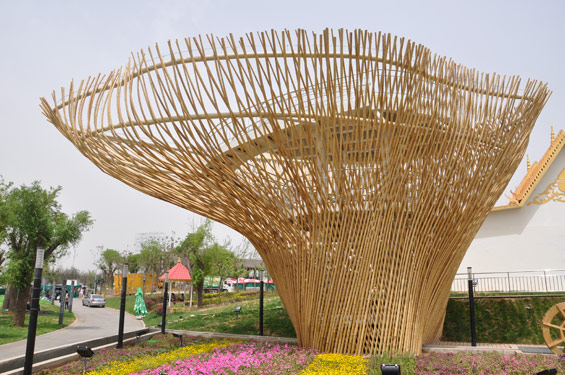
Images courtesy of OKRA Landscape Architects


